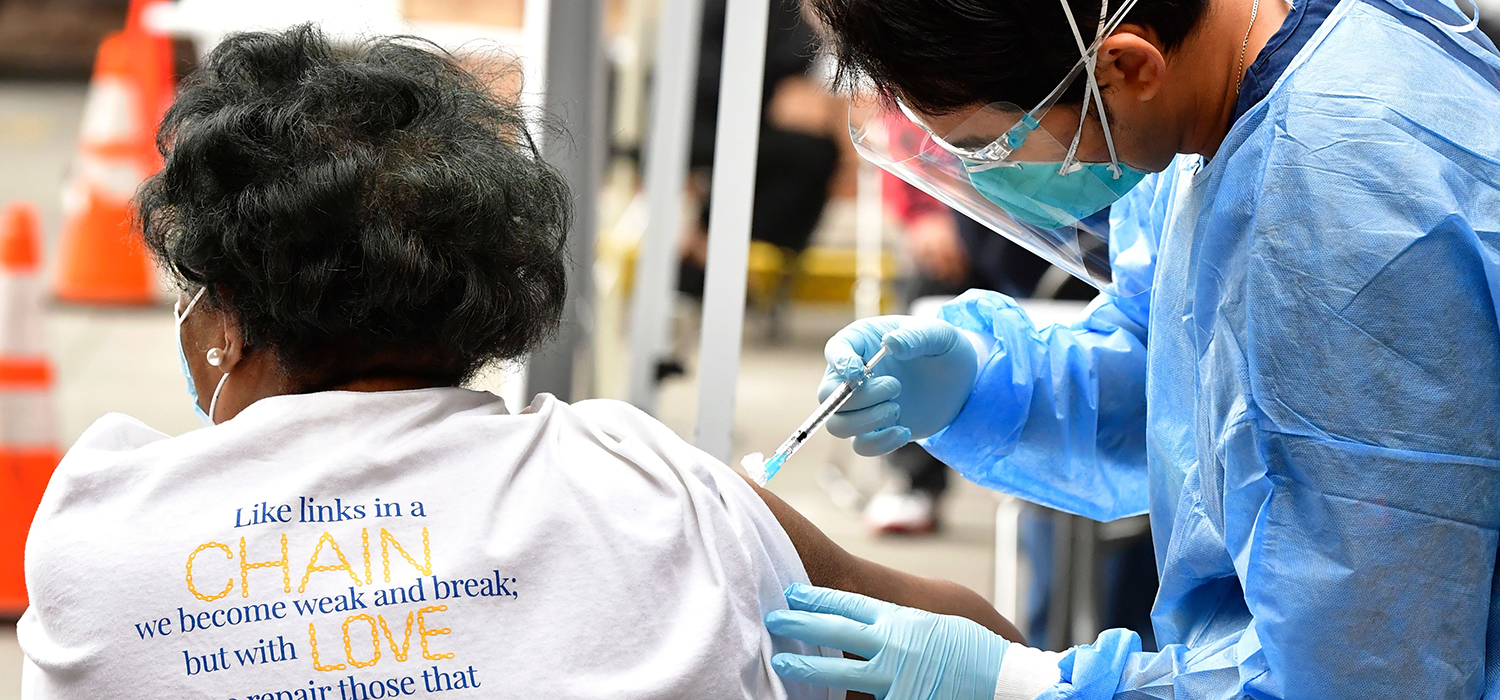
COVID-19 vaccination campaigns are well underway across the country, with 12 percent of the US population having received at least one shot. As vaccination availability expands to more groups beyond health care workers and older Americans, it’s critical for communities to create a vaccination plan to reach all people experiencing homelessness—and not just people in shelters.
Throughout the pandemic, people experiencing homelessness have faced greater threats of COVID-19 exposure, infection, and death than those who are housed. Environmental risks posed by congregate shelters or unsheltered conditions are compounded in a population more likely to be older and have chronic health conditions than average adults. A New York City study found the mortality rate for people residing in shelters during the pandemic was nearly double that of the general population.
Vaccines are an important tool to protect people experiencing homelessness from COVID-19, but public health and homeless assistance systems face substantial barriers to reaching this group. Although many people enduring homelessness may meet other criteria given their age or underlying health conditions, they are generally not well connected to the health care system and face substantial challenges accessing the vaccine. And vaccine administration takes time—time to share information about the vaccine, administer the first dose, and plan for the second dose. Providing appropriate follow-up and care is even more challenging because people may move around or lack a safe space to store their vaccine card, or they may become disconnected from the shelter or service provider storing it for them.
Local health departments and homeless service systems will need to work closely together to ensure their vaccine efforts are effective in reaching people experiencing homelessness.
Past vaccination campaigns and current guidance offer best practices communities can adopt
Service providers have experience with vaccines through efforts to inoculate people annually against the flu and to prevent outbreaks of diseases such as hepatitis A. Communities can take steps to increase vaccine uptake among people experiencing homelessness, described in recent guidance from the US Department of Housing and Urban Development and Centers for Disease Control and Prevention. Key lessons include the following:
- Involve and uplift people experiencing homelessness in planning and distribution. Vaccine ambassadors, such as those recruited by a shelter in Boston, can help increase trust and uptake among people experiencing homelessness, as well as provide feedback throughout the process. Planning should also be grounded in available local data and input from frontline staff.
- Focus on racial equity and track uptake. In each step of the process, communities need to recognize that COVID-19 and homelessness disproportionately affect people of color and must actively work to reverse these inequities. The Biden administration (PDF) and practitioners have emphasized the importance of an equitable vaccine distribution approach. The National Alliance to End Homelessness updated its Racial Equity Network Toolkit, a spreadsheet communities can use to assess their data for disparate outcomes, to include vaccine information.
- Plan for a varied distribution approach. Local health providers and shelters may be a good starting point, but they will not reach everyone. Communities should consider using other centrally located and well-trafficked locations for vaccinations, or they could bring the vaccine directly to people living in unsheltered locations. In 2017, following an outbreak of hepatitis A, public health officials in San Diego implemented an outreach strategy targeting harder-to-reach people, including deploying mobile vaccination vans and teams of outreach workers on foot.
- Invest in short- and long-term health supports. A study of vaccine acceptance in Michigan found that people enduring unsheltered homelessness did not have regular access to toilets and other sanitary services. Communities should consider ways to leverage the vaccine interaction to provide additional community connections and supports. A vaccine pilot in Los Angeles (PDF) found greater success in acceptance by handing out food and water along with the vaccine. Good follow-up is particularly important with the current COVID-19 vaccines, which require two doses. Additional measures are also necessary to help people cope with any vaccine side effects and to ensure safe storage of vaccine cards for proper follow-up.
- Do not use vaccination status as a barrier to services. Some people experiencing homelessness may not become vaccinated because of lack of access or because of distrust in the health care system—potentially stemming from previous experiences of racism or discrimination in health care. Evidence supports Housing First strategies, in which housing and services are provided voluntarily and with no preconditions, as the best way to help people leave homelessness. Whether someone has been vaccinated should not determine whether they receive services.
Vaccines are a crucial step, but communities need permanent housing solutions
Vaccines will help protect people against the potentially devastating effects of COVID-19, but they are not a cure-all solution. Without a home, people will continue to face greater health risks. Communities need more investments in permanent housing solutions that outlast the pandemic and ensure all people can be healthy and supported, with a roof over their heads.
Tune in and subscribe today.
The Urban Institute podcast, Evidence in Action, inspires changemakers to lead with evidence and act with equity. Cohosted by Urban President Sarah Rosen Wartell and Executive Vice President Kimberlyn Leary, every episode features in-depth discussions with experts and leaders on topics ranging from how to advance equity, to designing innovative solutions that achieve community impact, to what it means to practice evidence-based leadership.